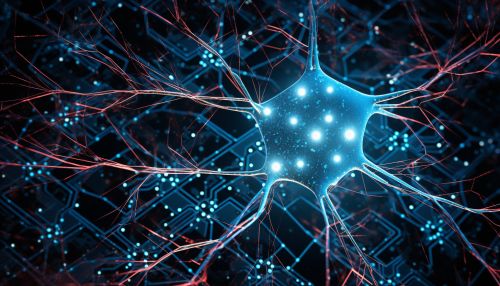Bio-inspired computing
Introduction
Bio-inspired computing, also known as biologically inspired computing, is a field of study that abstracts and scales chemico-biological phenomena into computational systems. The field is related to, but distinct from, artificial intelligence, machine learning, and computational neuroscience. This article delves into the principles, methodologies, and applications of bio-inspired computing.


Principles
Bio-inspired computing is based on the principles of biological systems. These principles include evolution, neuroscience, molecular biology, and genetics. The field seeks to understand how biological systems function and how these functions can be applied to computational systems.
Evolution
In bio-inspired computing, the principle of evolution is used in the development of evolutionary algorithms. These algorithms use mechanisms inspired by biological evolution, such as reproduction, mutation, recombination, and selection. The population within these algorithms evolves over generations, and individuals are selected based on their fitness within the environment.
Neuroscience
The principles of neuroscience are used in the development of artificial neural networks. These networks are inspired by the structure and function of biological brains. They consist of interconnected nodes, or "neurons," which process information. The connections between these neurons are adjusted based on experience, mimicking the plasticity of biological brains.
Molecular Biology
In molecular biology, the principles of DNA computing and quantum computing are used. DNA computing uses DNA, biochemistry, and molecular biology hardware, instead of the traditional silicon-based computer technologies. Quantum computing uses quantum bits, or qubits, which can be in superpositions of states, allowing for greater computational power.
Genetics
The principles of genetics are used in the development of genetic algorithms. These algorithms use techniques inspired by natural evolution, such as inheritance, mutation, selection, and crossover.
Methodologies
Bio-inspired computing methodologies include the use of swarm intelligence, artificial immune systems, and artificial life. These methodologies are used to solve complex computational problems.
Swarm Intelligence
Swarm intelligence is a bio-inspired computing methodology based on the collective behavior of decentralized, self-organized systems. It is used in the development of algorithms such as ant colony optimization and particle swarm optimization.
Artificial Immune Systems
Artificial immune systems are computational systems inspired by the principles and processes of the vertebrate immune system. They are used for problem-solving, pattern recognition, and anomaly detection.
Artificial Life
Artificial life is a field of study that examines life and life-like systems through the use of computer, mechanical, and chemical models. It is used in the development of cellular automata and artificial organisms.
Applications
Bio-inspired computing has a wide range of applications, including optimization, data mining, robotics, and bioinformatics.
Optimization
Bio-inspired computing is used in optimization to find the best solution to a problem. This includes the use of swarm intelligence for route optimization and genetic algorithms for function optimization.
Data Mining
In data mining, bio-inspired computing is used to extract useful information from large datasets. This includes the use of artificial neural networks for pattern recognition and artificial immune systems for anomaly detection.
Robotics
In robotics, bio-inspired computing is used to develop robots that mimic the behaviors and abilities of living organisms. This includes the use of swarm intelligence for collective robotics and artificial life for the development of autonomous robots.
Bioinformatics
In bioinformatics, bio-inspired computing is used to analyze and interpret biological data. This includes the use of genetic algorithms for sequence alignment and artificial neural networks for protein structure prediction.
See Also
- Artificial Intelligence
- Machine Learning
- Computational Neuroscience
- Evolutionary Algorithms
- Artificial Neural Networks
- DNA Computing
- Quantum Computing
- Genetic Algorithms
- Swarm Intelligence
- Artificial Immune Systems
- Artificial Life
- Ant Colony Optimization
- Particle Swarm Optimization
- Cellular Automata
- Artificial Organisms
- Optimization (Mathematics)
- Data Mining
- Robotics
- Bioinformatics
